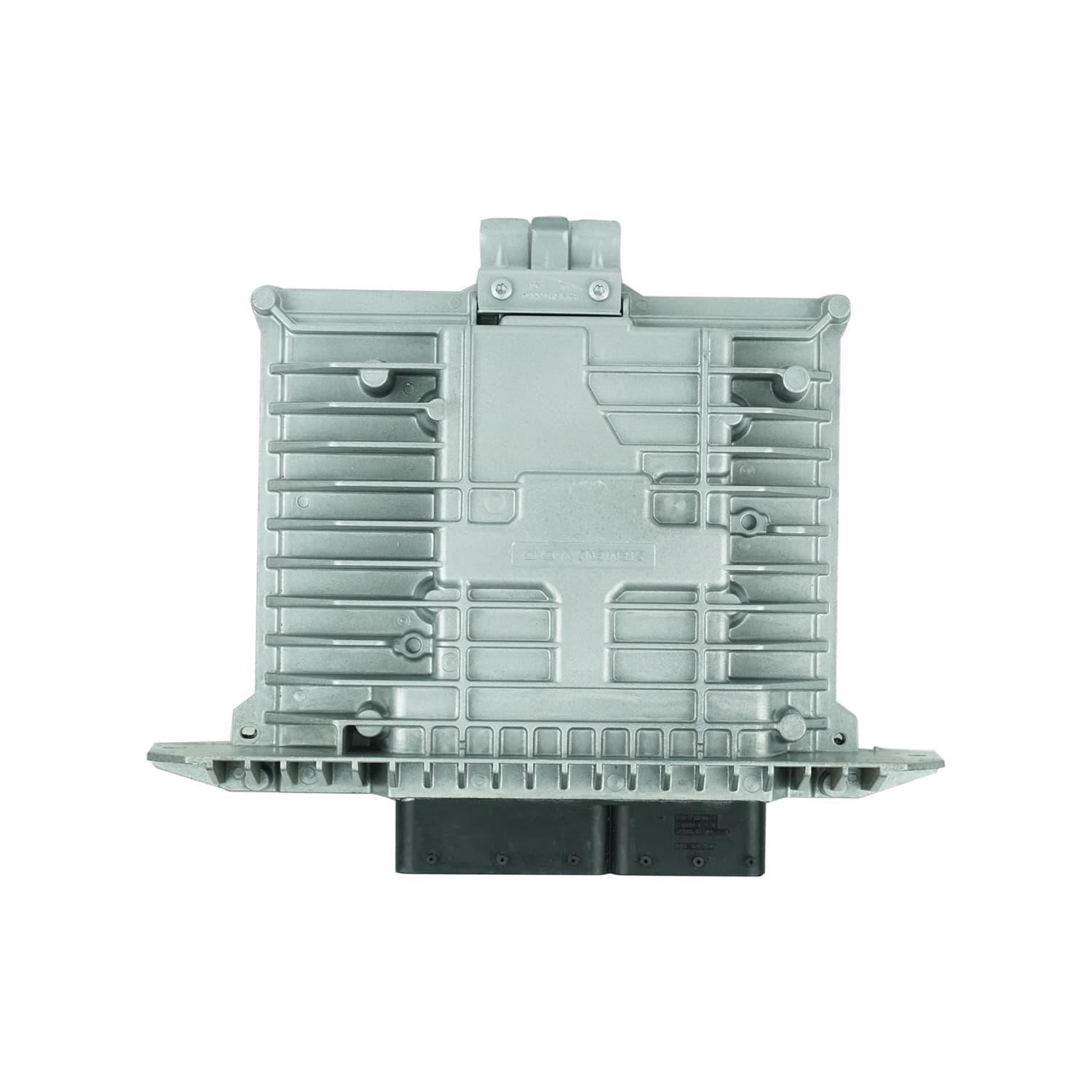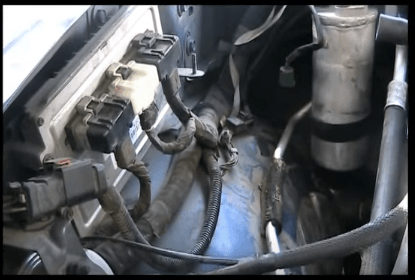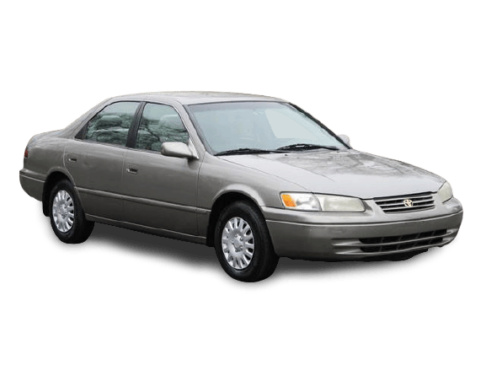Last updated on November 4th, 2024 at 10:56 am
In the world of vehicle maintenance, understanding the intricacies of your car’s Electronic Control Module (ECM) is essential. Acting as the car’s computer, the ECM plays a significant role in ensuring optimal performance. But what happens when it needs a reset? This blog post will guide you through the simple yet crucial process of resetting your car’s ECM, a necessary step for anyone keen on comprehensive vehicle maintenance.
II. What is the ECM and Why is it Important?
The Electronic Control Module (ECM) is essentially the brain of your vehicle, controlling myriad processes related to engine performance and functionality. It continually receives data from various sensors embedded in the car, processes this information, and then uses it to command the engine’s fuel injectors and ignition system. The ECM’s critical role in regulating engine operations makes it vital for optimum vehicle performance. If it malfunctions, it can have a significant impact on your car’s fuel efficiency, emission control, and overall drivability. Therefore, understanding the ECM and maintaining it appropriately is key to your vehicle’s health and longevity.
III. Signs that Your ECM May Need a Reset
- Frequent Engine Stalling or Misfires: If you notice that your engine stalls or misfires frequently, it could be a sign of underlying issues such as a faulty ignition coil or fuel injector. These problems can disrupt the combustion process and cause your engine to run unevenly or even stall altogether.
- Poor Fuel Efficiency: When your vehicle’s fuel efficiency starts to decline, it could indicate problems with the fuel delivery system, such as a clogged fuel filter or malfunctioning oxygen sensor. These issues can lead to inefficient fuel combustion, resulting in reduced mileage and increased fuel consumption.
- Difficulty in Starting the Engine: If you experience difficulty starting your engine, it may be due to a malfunctioning starter motor, weak battery, or a problem with the ignition switch. These issues can prevent the engine from starting smoothly and may require professional attention to diagnose and fix.
- Check Engine Light Stays On: When the check engine light remains illuminated on your vehicle’s dashboard, it signifies that the onboard diagnostic system has detected a problem. This could range from a loose gas cap to a more serious issue like a malfunctioning sensor or catalytic converter. It’s important to have the cause of the check engine light checked by a professional to prevent further damage to your vehicle.
- Unexpected Gear Shifts: If your vehicle shifts gears unexpectedly or has difficulty shifting smoothly, it could be a sign of a transmission problem. This can be caused by issues such as low transmission fluid, a worn-out clutch, or a faulty solenoid. Prompt attention is necessary to prevent further damage to your transmission.
- Unusual Engine Noises: Unusual engine noises, such as knocking, grinding, or hissing sounds, should not be ignored. These noises can indicate problems with various engine components, including the pistons, valves, or exhaust system. Ignoring these noises may lead to more severe engine damage and costly repairs.
- Reduced Vehicle Speed: When you notice a significant decrease in your vehicle’s speed, it may be due to a problem with the fuel system, transmission, or engine. Issues such as a clogged fuel line, worn-out transmission components, or a malfunctioning throttle body can all contribute to reduced vehicle speed and compromised performance.
- Impaired Emission Control: If your vehicle fails to meet emission standards or emits excessive smoke from the exhaust, it indicates a problem with the emission control system. This can be caused by issues such as a malfunctioning oxygen sensor, catalytic converter, or evaporative emission control system. Timely repair is crucial to ensure environmental compliance and proper engine performance.
- Erratic Engine Performance: When your engine operates erratically, with surges or fluctuations in power output, it may be a sign of an underlying issue. This can be caused by problems with the fuel system, ignition system, or engine sensors. Addressing these issues promptly can help maintain smooth and consistent engine performance.
- Failed Emission Tests: If your vehicle fails an emission test, it means that it is not meeting the required emission standards. This can be due to various factors, such as a malfunctioning catalytic converter, oxygen sensor, or exhaust gas recirculation (EGR) valve. Proper diagnosis and repair are necessary to ensure compliance with emission regulations and to prevent further environmental impact.
IV. Additional Information on ECMs
Types of ECMs
ECMs come in many different types, each designed to manage and control a specific aspect of your vehicle’s operation. Some common types include the Engine Control Module, Transmission Control Module, and Body Control Module. While the Engine Control Module typically oversees parameters such as fuel injection, ignition timing, and idle speed control, the Transmission Control Module manages gear shifts, fluid pressure, and clutch application. The Body Control Module, on the other hand, controls functions related to the vehicle’s interior, such as lighting, security, and climate control.
Benefits of Resetting the ECM
Resetting the ECM can offer several benefits, particularly in resolving issues related to engine performance. First, it can clear stored error codes that may be causing the check engine light to stay on. This step can help diagnose any persistent or intermittent mechanical problems. Second, a reset can recalibrate the ECM to the default factory settings, which may improve performance if previous settings were sub-optimal or caused by faulty sensor readings. Lastly, resetting the ECM can sometimes resolve minor electrical issues, as the process involves disconnecting the battery, which can reset other electrical systems as well.
Risks of Resetting the ECM
While resetting an ECM can offer some benefits, it does come with certain risks. First, if the ECM reset does not resolve the problem, the issue may lie deeper within the vehicle’s mechanical or electrical systems. In such cases, resetting the ECM frequently could mask the real problem, potentially leading to further damage. Second, if done incorrectly, resetting the ECM could lead to damage to the module itself, potentially necessitating costly repairs or replacements. Finally, resetting the ECM will erase any error codes stored in the system, which could make subsequent diagnosis of any ongoing issues more challenging. Therefore, it’s recommended to record any error codes prior to performing a reset and to consult a professional if problems persist.
V. How to Reset Your ECM
By Disconnecting the Car Battery
- Turn off the vehicle and ensure all electrical components are switched off.
- Locate the battery and identify the positive (+) and negative (-) terminals.
- Disconnect the negative terminal first.
- Wait for 10-15 minutes.
- Reconnect the battery terminals, starting with the positive terminal first.
By Removing the ECM Fuse
- Ensure the vehicle is completely off.
- Locate the fuse box and open the cover.
- Find the ECM fuse on the fuse diagram.
- Carefully remove the ECM fuse and wait for 10-15 minutes.
- Reinsert the ECM fuse into its original location.
- Close the fuse box.
- Start the vehicle.
VI. The Relearning Phase
- Allow the vehicle to idle for a few minutes without using any accessories.
- Drive the vehicle as you normally would, including a mix of highway and city driving if possible.
- Be patient. The relearning process can take anywhere from a few days to a couple of weeks.
VII. Frequently Asked Questions (FAQs)
An Engine Control Module (ECM) is a type of electronic control unit (ECU) that manages and controls various aspects of your vehicle’s operation, including fuel injection, ignition timing, and idle speed control.
Resetting your ECM can help resolve issues related to engine performance. It can clear stored error codes, recalibrate the ECM to its default factory settings, and sometimes resolve minor electrical issues.
There are two primary methods to reset your ECM: disconnecting the car battery or through the fuse box. Both methods involve turning off your vehicle entirely and disconnecting certain components for a period of time to allow the car’s electrical systems to discharge.
Though resetting the ECM carries potential benefits, it also poses some risks. These include masking deeper issues within the vehicle’s systems, potential damage to the ECM if the reset is done incorrectly, and erasure of diagnostic error codes.
After resetting, your vehicle enters a “relearning” phase where it relearns adaptive settings like minimum throttle position and fuel mixture. This process can take from a few days to a couple of weeks.
While an ECM reset is a fairly straightforward task, if you’re unsure or uncomfortable doing it yourself, you should consult a professional. Incorrectly resetting the ECM can lead to damage, potentially necessitating costly repairs or replacements.

VIII. Conclusion
The Engine Control Module (ECM) serves as the brain of your vehicle, supervising and adjusting key elements of engine performance. Therefore, appropriate care and maintenance, including resetting when necessary, are crucial to ensure optimal operation. Common signs indicating a need to reset your ECM can involve unusual engine behaviors, such as erratic idle speed, increased fuel consumption, or difficulty starting the vehicle. The process of resetting your ECM, whether by disconnecting the battery or through the fuse box, is a relatively simple task that can yield significant improvements to your vehicle’s performance.
However, it’s important to be aware that these methods carry potential risks, and should be approached with caution. If you are unsure, always consult a professional to avoid potential damage. Remember, after the reset, your vehicle will enter a ‘relearning’ phase where it adjusts to its default settings. This is a normal part of the process and is essential for the ECM to effectively manage your vehicle’s performance. In essence, a well-maintained ECM can contribute to a smoother and more efficient driving experience, underlining its importance in your vehicle’s overall health.
IX. Additional Resources
To facilitate enhanced understanding and maintenance of your vehicle’s ECM, several additional resources could be utilized. Diagnostic tools, both hardware and software, offer a way to read and interpret the ECM’s error codes, offering insights into potential problems and their locations. Repair manuals, either in print or digital form, provide comprehensive, model-specific guides on various maintenance tasks, including ECM resetting. Professional services, from general mechanics to specialized ECM technicians, are valuable resources that offer expertise, advanced diagnostic capabilities, and confidence in the correct handling of the ECM. Utilizing these resources can ensure informed decisions and appropriate actions when dealing with your vehicle’s ECM.
Resetting your cars ecu, should not be a hassle at all as there are many more ways to reset your ECU and there are many more reasons for doing so. Resetting your car computer will do no harm to your vehicle and should always be done when any replacements are installed like a fuel filter, knock sensor even you when after work on your car air conditioning or any diagnostics are performed . Do not hesitate to check your repair manuals or the owners manual if you want to replace your vehicle ECM.






2009 explorer will not relearn
hello. can i replace my ECM with deferent part numbers or do they have to be the same numbers thank you
i have a 2009 c300 mecedes
how can I find out if my PCM is bad on a 2008 Dodge Ram 1500 5.7l engine??? My email address is: tmh6072@gmail.com
how do I reset ECM on 2001 saturn L300 3.0 L … does the reset work for all controls ?
How do I reset pcm and TCM on 02 ram 1500?
Auto Zone diagnostic said my Check Engine light was being caused by a bad spark plug. Once the spark plug is replaced, they said reset the ECM module. Does all of this sound reasonable? Should I reset the ECM module first to see if that might automatically solve the timing issue. I was told that spark plugs don’t need to be changed anymore, so, I want to be sure I am doing the right thing and in the right order.
08 odyssey, check eng.lite on, vsa lite on constantly have to reset and wipe them out (hassle) stills runs rough, had eng.out replaced timing belt,water pump, egr.valve even the cam lobes were pitted so new cams, radiator everything is new and its still runs rough, check eng lite eventually come on
even my pass.side rear slider trips and i can not even open the door until i re-set it. complete tune up
checked all the wires, connections 3 times (pain in the ass) what do i do ??
I have a 2005 Chrysler PT Cruiser Limited 2.4 gasoline engine no turbocharger. Now the PCM keeps telling the Alternator to overcharge my battery and causing it to smoke. How can I fix this problem? Can it be fixed cheap?
I have a 05 Chrysler 300 touring. Replaced engine with one out of same car. Now its stuck in maybe 3rd gear? At 55mph its at 5-6000 rpms. Would the ecm/pcm affect that?
I have a 2005 freestar that will do everything but crank over do I need to change the brain or what should I try
Quite useful i information here. Highly appreciated. Can I drop a message to ask for assistance with diagnosing my car challenges?
My 2005 Toyota matrix trips off, once in a while in drive (D) and more frequently and instant in Reverse (R) gear. At times , it jerks before going off but some other times,there is no notification. What could be wrong?
I have a simple alarm system on the car and I replaced the car ECU once when it was stolen at a park.
Went from v6 to v8 Chevy Silverado /2014 v6 went to v8 2018 Chevy Silverado v8 security issues with security do I need to replace ECU
I have a 2009 Buick Lucerne cxl with a 3.9. I keep getting a Engine Hot AC OFF message. Would a new PCM fix that?
I have a 2006 4.0 . I took off catalytic converters. It runs great but the transmission bangs into reverse and drive bad
Installed a new pcm on firewall and same two codes keep reappearing, erase, they come right back on?
2004 ram 1500 5.7 hemi, all new exhaust, cats, O2 sensors.?
2011 Malibu Ltd
Starter, battery,fuses and relay
Are good.
Still have a no crank.
And no signal to the s pole on the starter.
I directly wired the starter and tried to start with the key on and would not start.
What am I missing?
Drove the car about 15 min.
Shut it off emptied car out and
Went to start the car and wouldn’t start.
Any other help I can get
Thank you
Yours ackiejw@aol.com
pls can i get your number so we can keep in touch pls
I have a 2002 chrysler 300m and it needs the ecm reprogrammed can you walk me through it
Hi my name’s Bart I’m just trying to find out some information for a mate who has a 2005 Nissan Pulsar that stopped starting and don’t know why have tried to reset the computer by taking the battery terminals off and no luck starting when trying to start engine again we had a fellow from RACQ come out and check with his diagnostic tool and told my mate it’s the key and the radiator may be on the way out so we are just wondering what to do next if someone could please assist us with some info that would be great thanks.